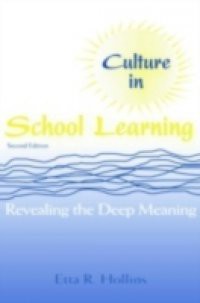In this text Etta Hollins presents a powerful process for developing a teaching perspective that embraces the centrality of culture in school learning. The six-part process covers objectifying culture, personalizing culture, inquiring about students' cultures and communities, applying knowledge about culture to teaching, formulating theory or a conceptual framework linking culture and school learning, and transforming professional practice to better meet the needs of students from different cultural and experiential backgrounds. All aspects of the process are interrelated and interdependent. Two basic procedures are employed in this process: constructing an operational definition of culture that reveals its deep meaning in cognition and learning, and applying the reflective-interpretive-inquiry (RIQ) approach to making linkages between students' cultural and experiential backgrounds and classroom instruction. Discussion within chapters is not intended to provide complete and final answers to the questions posed, but rather to generate discussion, critical thinking, and further investigation. Pedagogical Features Focus Questions at the beginning of each chapter assist the reader in identifying complex issues to be examined. Chapter Summaries provide a quick review of the main topics presented. Suggested Learning Experiences have been selected for their value in expanding preservice teachers' understanding of specific questions and issues raised in the chapter. Critical Readings lists extend the text to treat important issues in greater depth. New in the Second Edition New emphasis is placed on the power of social ideology in framing teachers' thinking and school practices. The relationship of core values and other important social values common in the United States to school practices is explicitly discussed. Discussion of racism includes an explanation of the relationship between institutionalized racism and personal beliefs and actions. Approaches to understanding and evaluating curriculum have been expanded to include different genres and dimensions of multicultural education. A framework for understanding cultural diversity in the classroom is presented. New emphasis is placed on participating in a community of practice. This book is primarily designed for preservice teachers in courses on multicultural education, social foundations of education, principles of education, and introduction to teaching. Inservice teachers and graduate students will find it equally useful.

